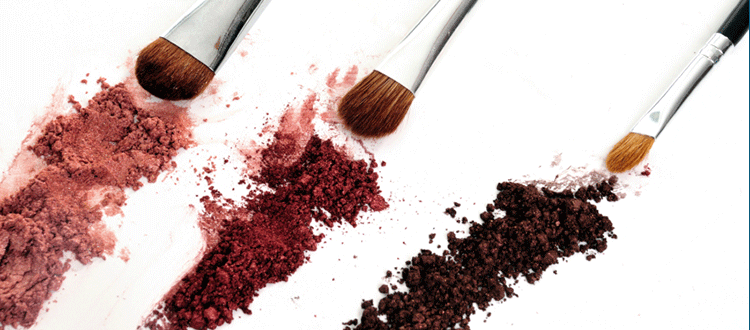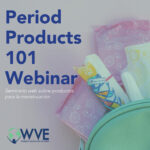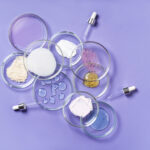Tips for Finding Honest Skin Care and Beauty Brands
 |
|
Mia Davis Head of Health & Safety |
I consider myself a pretty low-maintenance person when it comes to my morning routine, but the products I use in the morning add up fast—eight on a normal day, maybe 12 on others. This is average; most women in America are using 12 or more products a day. The ingredients listed on the ingredient labels of these myriad products may number one hundred, or even several hundred. While a great many of them are perfectly safe for people’s long-term health, many ingredients are linked to serious health issues, or their health impacts are unknown. To add insult to injury, many other chemicals are kept hidden from the consumer.
For many years, I have worked with WVE and other organizations and individuals who find this lack of safety and transparency to be a big problem. The avenue that I’m choosing to work in now is within the cosmetics industry itself.
Beautycounter is a skin care and beauty product company dedicated to safety and performance. We were founded on the belief that everyone deserves safe products, and deserves to know everything that is in those products. I am proud that Beautycounter products are part of the solution, and prouder still of our company’s commitment to radical transparency, consumer education and to moving the entire marketplace away from toxins and toward safer, honest ingredients and processes.
The consumer’s “right-to-know” is a big issue—so many companies (up and down the supply chain and in different industries, from cosmetics to food to household cleaners to tampons) are hiding stuff from us. At the worst, these secrets put our health and the health of the planet at risk, and at the very least, they do not allow for informed decision-making or a level playing field in the market.
Beautycounter screens every ingredient for safety, asks ingredient suppliers for information on sourcing and purity, we test for any background contamination, disclose all ingredients, and make our labels easy to read. It is not easy, but it is so important. We encourage other companies to do the same.
As a step in helping you get more information on your cosmetic products, I’m highlighting three main label-reading obstacles that apply to most skin care and cosmetics products on the market—regardless of whether you’re looking at a “natural” or a “conventional” cosmetic brand. Ultimately, it’d be great if consumers didn’t have to be ingredient-label sleuths, but until we/Congress improves cosmetics regulation, consumers have to be vigilant.
Three label lurkers to watch for:
- Fragrance.
“Fragrance” is considered a trade secret, so companies don’t have to disclose what the blend of ingredients is, whether it is cologne or the scent added to a body lotion. “Fragrance” is usually a synthetic concoction that may include phthalates and synthetic musks, both of which are endocrine disruptors, as well as other chemicals that are allergens and neurotoxins. “Natural” fragrance should lack these harmful ingredients (emphasis on should), but you’re still in the dark about what is in it, which certainly isn’t helpful for people with allergies or sensitivities to essential oils.
Back in the day, there might have been some legitimacy to keeping fragrance a trade secret, but I am told that these days cosmetics chemists can fairly easily figure out what is in another product’s fragrance. So you’re left to wonder who’s really kept in the dark here, and why.
- Contaminants.
Some chemicals are not intentionally added to products, but are contaminants (e.g. lead in lipstick), or are present as the result of chemical reactions happening inside the bottle of product (e.g. formaldehyde as a contaminant that conveniently also acts as a preservative in shampoo). Companies usually know that these toxins will be in the finished products, but since they don’t have to test for them or list them on ingredient labels, they simply don’t. Consumers might be under the impression that a product marketed as mineral-based or natural or soothing would be free of chemicals that could cause harm, but unfortunately that isn’t the case… and even reading ingredient labels might not tell the whole story.
- Preservatives.
When a cosmetic product contains water, it needs to contain a preservative to prevent the growth of bacteria, yeast and mold (which are not only gross, they can be harmful). Some companies list all of their preservatives on labels (and indeed, some seem to use many—Beautycounter uses only as much as we need to get the job done, and no more than that).
But some companies aren’t being honest. When companies buy bulk ingredients from ingredient suppliers, they are often getting an already-preserved raw ingredient (e.g. aloe vera gel with added phenoxyethanol, or grapefruit seed extract with added methlyparaben). But the end product does not have to list the preservative that is tagging along with these raw ingredients, so even those products that imply they are preservative-free or paraben-free may not be. Consumers selecting “preservative free” cosmetics should be very wary—they’re either accepting the risk of mold growth or they’re a false bill of sale. (Unless the product contains no water—then it might really not need a preservative.)
Tips for finding out if a personal care product company is fully disclosing all ingredients:
- Look for fully disclosed, natural fragrance ingredients in the form of a list of essential oils (or oil constituents, like “linalool), or seek truly unscented products (check the ingredient label to make sure there isn’t any “masking fragrance.”) We encourage you to avoid synthetic fragrances.
- Look for preservatives in water-based cosmetics, and avoid those preservatives that are linked to health issues in favor of those that are safer (at least when used in very small amounts in cosmetics). A list of preservatives you might find in safer and/or more natural products includes sodium benzoate, potassium sorbate, phenoxyethanol, caprylhydroxamic acid, polyaminopropyl biguanide, and ethylhexylglycerin. Keep in mind, preservatives are meant to kill, so they might score higher in the Skin Deep database than other ingredients, and some of these preservative options are still understudied. But disclosure is a good sign, and might mean that you’re not getting additional secret preservatives in the product.
- Ask companies what they are doing to limit or avoid contamination, especially in color cosmetics where heavy metals are often an under-discussed issue.
 |







Although I do believe in some of things you are saying, you should do a bit more research before promoting polyaminopropyl biguanide. If all you are doing is looking at Skin Deep, which gives it a 2 from limited data, it may seem ok, but searching the literature you will find many issues with it. Toxicity, target organs, and its method of preserving have all shown great concern for most impartial researchers. That is one of the main reasons many in the “natural ” cosmetics industry have moved away from it in the last 5-10 years. I do applaud what BeautyCounter is doing, but have found your choices a bit confusing. Are you able to share the ingredient screen with customers? I have never seen it on your site.
Do keep up the good work.
Karla
I have to agree with Karla. Personally I will not purchase from a company that does not include ALL the specific product ingredients on its website.
I totally agree. I use Puristics anti aging skin care products and what drew me to them is that they provide a list of all the ingredients used on their products right there on their website. I am a huge fan of fragrance free, chemical free products and am happy that so are Puristics.
Hi,
We agree too! We do indeed disclose EVERY single ingredient on product packaging, on the website, and in the Skin Deep database. If you go to a given product’s page on our website you’ll see the product image, and to the right of it is various information. You just click on the Ingredients tab and you see every ingredient- not just key ingredients, and no hidden ingredients, per the above blog! (http://www.beautycounter.com/catalog/product/view/id/17/s/routine-clean-cream-cleanser/category/6/)
We do use Skin Deep as the first stop in ingredient research, but we go far beyond it as well. We use authoritative lists like IARC, TEDX, SIN. We look for published data from PubMed, academic journals, manufacturers, CIR, and a variety of other sources. Information/health endpoints we’re looking for include cancer, reproductive toxicity, skin irritation, aquatic toxicity, persistence and more. We have a toxicologist who conducts thorough safety reviews on ingredients with hard to find data, or no available data (in which case he uses data on chemicals with similar structures, sources, etc). We do not have an image of the ingredient screen on the website, but knowing some of the data sources and the health endpoints pretty much paints the picture.
By the way… nothing is chemical free. Even water is a chemical! Chemicals themselves aren’t bad. It’s chemicals that are toxic or harmful that we want to avoid, and undisclosed chemicals just aren’t cool.
Thanks for the dialogue!